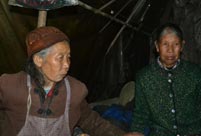

LIMA/CARACAS, May 14 -- Chinese cuisine, which is part of China's long-run culture, is internationally recognized for its variety and exquisite taste. It has gradually won places at dinner tables in South America, including Peru and Venezuela.
Following the start of Chinese immigration in Latin America centuries ago, Chinese gastronomy came to South America. "Chifa", a Cantonese dialect for "eating meals", is now widely used in Peru referring to Chinese restaurants. In Lime, capital of Peru, Chifas have become one of the main attractions in recent years.
Chifas are all over the city and cater to all social strata, where customers can enjoy such "classic" meals as fried rice, Chinese soup, sweet and sour pork, roasted duck, or spring rolls, among other favorites.
Chifas can be found in Peru's popular neighborhoods such as Surquillo, San Martin, San Juan de Lurigancho and Barrios Altos, as well as upscale districts like San Isidro, Miraflores, Monterrico and San Borja, where the restaurants tend to be larger, more elegant and ornately decorated.
According to Peruvian historians, the first Chinese immigrants arrived in Peru in 1849, as a consequence of the abolition of slavery in the country, which caused a shortage of labor at plantations in northern Peru.
The secret of Chinese food in Peru stemmed from the dining tables of the early Chinese immigrants who had to work in subhuman conditions for little food and low wages, but never abandoned their culinary customs. Ginger and soy sauce were two crucial ingredients that enhanced the taste and color of their dishes.
After more than a century of Chinese settlement in Peru, the most outstanding dietary culture integration has been the incorporation of Chinese food into Peru's culinary list which includes native ingredients. This syncretism is evident in the modern dishes served at Chifas.
The most famous symbol of this cultural integration is the development of Lima's Chinatown, located in Barrio Capon, where Chinese architecture and design share the vibrant red color of a long standing culture.
In Venezuela, Chinese gastronomy has also become a favorite, thanks to the variety of dishes it offers.
More than 500 restaurants and fast-food outlets are advertised in the country's yellow pages.
For some Venezuelans, it's attractive to try the taste of far away lands, different from local cuisine. They frequently visit Chinese restaurants.
Some of the most frequented Chinese restaurants in Venezuela are Salon Canton, Guerrero Xian and El Palmar, located in the capital city of Caracas.
Yet, for most residents of the Chinese community living in Venezuela, these dishes don't always represent authentic Chinese food as they have been adapted to the local spices and traditions.
For them, the best way to appreciate the culinary arts from Beijing and other regions is to head on Sundays to the fair held at El Bosque in Caracas.
The day starts early with the selling of food, a popular activity for the hundreds of Chinese living there.
After buying everything they need to complete their homemade recipes, those who go there will head to nearby restaurants where they will serve mainly traditional Cantonese-style breakfasts.
About 20 different varieties of bread with several fillings, sweet and savory, are served with fried or steamed desserts and green tea, providing a succulent morning buffet.
Dishes like Chinese raviolis stuffed with shrimp, balls of rice with meat and shrimp, and spicy chicken legs are among the favorites by the ethnic Chinese living there.
The colors and tastes of Chinese food have made it one of the most sought cuisines for Venezuelans.
 J-11 fighters in air exercise
J-11 fighters in air exercise Beauties dancing on the rings
Beauties dancing on the rings Attendants-to-be join Mr. & Miss Campus Contest
Attendants-to-be join Mr. & Miss Campus Contest Beijing's toughest anti-smoking law takes effect
Beijing's toughest anti-smoking law takes effect Family lives in cave for about 50 years in SW China
Family lives in cave for about 50 years in SW China PLA soldiers operating vehicle-mounted guns in drill
PLA soldiers operating vehicle-mounted guns in drill Blind carpenter in E China's Jiangxi
Blind carpenter in E China's Jiangxi China hosts overseas disaster relief exercise for the first time
China hosts overseas disaster relief exercise for the first time 20 pairs of twins who will become flight attendants in Sichuan
20 pairs of twins who will become flight attendants in Sichuan Obama is sowing discontent in S.China Sea
Obama is sowing discontent in S.China Sea Rescuers work through night to reach cruise ship survivors
Rescuers work through night to reach cruise ship survivors Driving through limbo
Driving through limbo Facing down MERS
Facing down MERSDay|Week